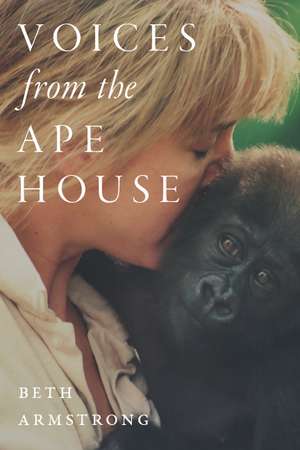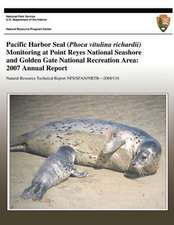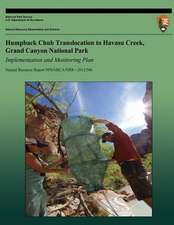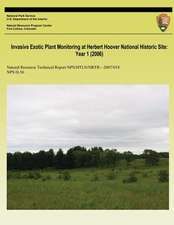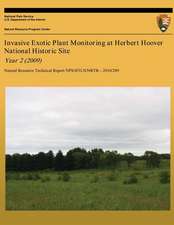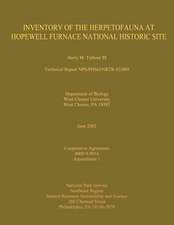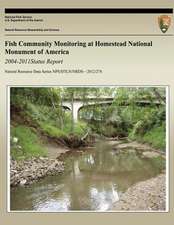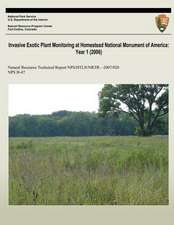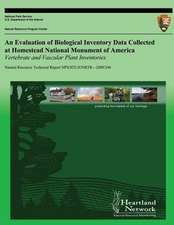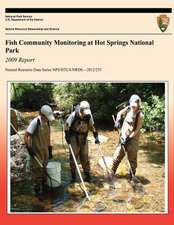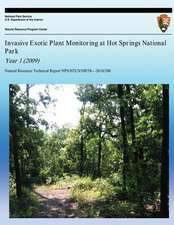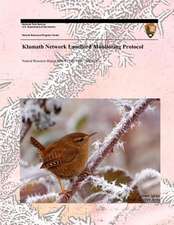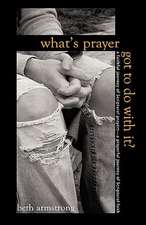Voices from the Ape House
Autor Beth Armstrongen Limba Engleză Paperback – 10 mar 2020 – vârsta ani
Exploring the history humans share with gorillas, Voices from the Ape House offers a behind-the-scenes look at the complicated social lives of western lowland gorillas through the eyes of a devoted zookeeper. The memoir traces Beth Armstrong’s love and fascination for animals, from her childhood to her work with captive primates as an adult. Through her eyes, readers sense the awe and privilege of working with these animals at the Columbus Zoo. Individual gorillas there had an enormous effect on her life, shaping and influencing her commitment to improving gorilla husbandry and to involving her zoo in taking an active role to protect gorillas in the wild.
Through anecdotal stories, readers get a glimpse into the fascinating lives of gorillas—the familiar gentleness of mothers and fathers toward their infants, power plays and social climbing, the unruly nature of teenagers, the capacity for humor, and the shared sadness by group members as they mourn the death of one of their own. In the end, Armstrong’s conflict with captivity and her lifelong fondness for these animals helped shape a zoo program dedicated to gorilla conservation.
Through anecdotal stories, readers get a glimpse into the fascinating lives of gorillas—the familiar gentleness of mothers and fathers toward their infants, power plays and social climbing, the unruly nature of teenagers, the capacity for humor, and the shared sadness by group members as they mourn the death of one of their own. In the end, Armstrong’s conflict with captivity and her lifelong fondness for these animals helped shape a zoo program dedicated to gorilla conservation.
Preț: 169.33 lei
Nou
Puncte Express: 254
Preț estimativ în valută:
32.41€ • 35.22$ • 27.24£
32.41€ • 35.22$ • 27.24£
Carte tipărită la comandă
Livrare economică 17-23 aprilie
Preluare comenzi: 021 569.72.76
Specificații
ISBN-13: 9780814255711
ISBN-10: 081425571X
Pagini: 312
Ilustrații: 35 b&w images
Dimensiuni: 152 x 229 x 30 mm
Greutate: 0.45 kg
Ediția:1
Editura: Ohio State University Press
Colecția Trillium
ISBN-10: 081425571X
Pagini: 312
Ilustrații: 35 b&w images
Dimensiuni: 152 x 229 x 30 mm
Greutate: 0.45 kg
Ediția:1
Editura: Ohio State University Press
Colecția Trillium
Recenzii
“Gorillas are also individuals, with unique quirks, personalities, and histories, and Armstrong writes about them with insight, intimacy, and heart in her lovely new memoir, Voices from the Ape House.” —Dave Ghose, Columbus Monthly
“Armstrong was in the forefront of exchanging experiences with other zoos around the world, developing a network of relationships that spread advances made in gorilla husbandry and zoo management.…Though the author's discussions of zoo management are … engaging, the most heart-touching material is found in the profiles of the gorillas. A pleasing gathering of distinct personalities and unique stories from the ape house.”—Kirkus Reviews
“Voices from the Ape House is a powerful journey through a remarkable time in zoological history. Throughout, Beth Armstrong examines the unique relationship between animals and people—showing that there is so much more to be learned as we work every day to conserve these magnificent creatures.” —Jack Hanna, host of Jack Hanna’s Into the Wild
“Beth Armstrong turns a revealing account of her career as an ape keeper into a love song for an extraordinary species. She captures the poignant tension between the magic of interacting closely with gorillas in captivity and the desperate need to support them in the wild. Her intimate revelations beautifully demonstrate that storytelling has a vital role to play in inspiring the next generation of conservationists.” —Dr. Richard Wrangham, author of The Goodness Paradox: The Strange Relationship Between Virtue and Violence in Human Evolution
“This beautifully written, heartfelt account of a zookeeper's experiences when in the company of gorillas testifies to the richness and rewards of human-animal coexistence. It is a must-read for all wildlife enthusiasts and certainly for budding zookeepers.” —Richard Johnstone Scott, former head gorilla keeper at Howletts Wild Animal Park and Jersey Island Zoo and author of Jambo: A Gorilla’s Story
Notă biografică
Beth Armstrong spent much of her life caring for and observing gorillas—first as a keeper and then as head keeper at the Columbus Zoo, 1982–1996. She became a passionate proponent and voice for gorillas in the wild—and many other species—as the first Field Conservation Coordinator at the Columbus and Brevard Zoos, respectively. She continues to promote the role of zoos in supporting fieldwork that actively protects great ape species in the wild.
Extras
It is always the smell I remember. Opening the back kitchen door to the Ape House lets loose a wave of gorilla—a thick deep pungent odor that envelops me as I unlock the door to let myself in. The aroma rolls out, dissipating into the early morning cool. By end of day, I will smell like a gorilla, their perfume clinging to my clothes, my hair, my skin.
The gorillas hear me. The click of the huge padlock alerts them that I have arrived and another day has begun. I hear their welcoming vocalizations, a deep rumbling, each greeting as distinct as the individual animal that elicits it. I cross the kitchen to the solid wooden sliding door that opens to the back keeper aisle and unlock it. As I slide it to the right, it reveals Colo, the first gorilla born in captivity, the matriarch of our gorillas, sitting in her usual dignified way at her barred back door. She has half a grapefruit husk perched snug on her head, perfectly balanced on her sagittal crest. A crown, if you will. She looks at me in such a dead-on serious way— I turn away to hide my smile. She looks silly, so sincere and thoroughly imperial. How does she pull it off?
“Good Morning, Colo,” I say as she carefully watches me. I have never been one of her favorites. Our initial meeting on my first day in the Ape House didn’t go well and I don’t think she has ever forgotten or forgiven me. She tolerates me, but I don’t think she’s overly fond of me.
Colo is one of the most beautiful gorillas I will ever meet. The contours of her face are heart shaped; her brown eyes are penetrating with an unusual rim of light gray around each iris. Her hands and feet are long and narrow. Her fingers and toes are equally long. In a word, they are elegant. Her coal-black skin is flawlessly uniform, her thick hair coat healthy and a deep black. She has grayed out as she has gotten older, but she has none of the reddish hair on her head that many of our other females have. She reminds me of a New York City matron from a well-to-dofamily: always smartly turned out, hair and make-up in place, wearing the perfect Chanel suit.
I turn back to the kitchen, start a pot of coffee, soak the eight food bins filled with vegetables and fruit, and then grab the vitamin bottles and begin my walk down the back aisle, distributing vitamins to each of the gorillas. This daily morning walk ensures that the gorillas receive their vitamin C and multivitamin tablets. But more importantly, it allows us to check on them, to give them a quick look-see to make sure all is OK. Over the years, this walk will reveal much heartache and joy. It will make known that in the depths of the night their lives went on without us, that babies were born, beloved troop members died—a daily reminder that wereally are periphery to their complicated lives. We may be charged with “keeping” them, but they never will be “ours.”
We keepers are the fortunate few in this world to bear witness to their lives, to every once in a while be asked to join in a bout of play or chase, to be accepted as an observer watching the careful tenderness of a silverback touching his newborn son for the first time, or to unexpectedly come upon a boisterous round of tickling between two usually reserved adults, and backing away quietly so as not to interrupt them. We few hear the sad mourning call after the death of a troop member, the haunting refrain wafting through the Ape House, its tender tendrils looking into every nook and cranny as if searching for the lost group member. We are, quite simply, privileged.
The gorillas hear me. The click of the huge padlock alerts them that I have arrived and another day has begun. I hear their welcoming vocalizations, a deep rumbling, each greeting as distinct as the individual animal that elicits it. I cross the kitchen to the solid wooden sliding door that opens to the back keeper aisle and unlock it. As I slide it to the right, it reveals Colo, the first gorilla born in captivity, the matriarch of our gorillas, sitting in her usual dignified way at her barred back door. She has half a grapefruit husk perched snug on her head, perfectly balanced on her sagittal crest. A crown, if you will. She looks at me in such a dead-on serious way— I turn away to hide my smile. She looks silly, so sincere and thoroughly imperial. How does she pull it off?
“Good Morning, Colo,” I say as she carefully watches me. I have never been one of her favorites. Our initial meeting on my first day in the Ape House didn’t go well and I don’t think she has ever forgotten or forgiven me. She tolerates me, but I don’t think she’s overly fond of me.
Colo is one of the most beautiful gorillas I will ever meet. The contours of her face are heart shaped; her brown eyes are penetrating with an unusual rim of light gray around each iris. Her hands and feet are long and narrow. Her fingers and toes are equally long. In a word, they are elegant. Her coal-black skin is flawlessly uniform, her thick hair coat healthy and a deep black. She has grayed out as she has gotten older, but she has none of the reddish hair on her head that many of our other females have. She reminds me of a New York City matron from a well-to-dofamily: always smartly turned out, hair and make-up in place, wearing the perfect Chanel suit.
I turn back to the kitchen, start a pot of coffee, soak the eight food bins filled with vegetables and fruit, and then grab the vitamin bottles and begin my walk down the back aisle, distributing vitamins to each of the gorillas. This daily morning walk ensures that the gorillas receive their vitamin C and multivitamin tablets. But more importantly, it allows us to check on them, to give them a quick look-see to make sure all is OK. Over the years, this walk will reveal much heartache and joy. It will make known that in the depths of the night their lives went on without us, that babies were born, beloved troop members died—a daily reminder that wereally are periphery to their complicated lives. We may be charged with “keeping” them, but they never will be “ours.”
We keepers are the fortunate few in this world to bear witness to their lives, to every once in a while be asked to join in a bout of play or chase, to be accepted as an observer watching the careful tenderness of a silverback touching his newborn son for the first time, or to unexpectedly come upon a boisterous round of tickling between two usually reserved adults, and backing away quietly so as not to interrupt them. We few hear the sad mourning call after the death of a troop member, the haunting refrain wafting through the Ape House, its tender tendrils looking into every nook and cranny as if searching for the lost group member. We are, quite simply, privileged.
Cuprins
Chapter 1 Ape House
Chapter 2 Childhood
Chapter 3 Clarity
Chapter 4 Primate Behavior 101
Chapter 5 Beginnings
Chapter 6 Chimpanzees
Chapter 7 Rebels
Chapter 8 Dispelling Myths
Chapter 9 Leadership
Chapter 10 An Extraordinary Year
Chapter 11 Construction
Chapter 12 Bongo
Chapter 13 Back to the Children’s Zoo
Chapter 14 More Primate Experience
Chapter 15 A Bigger World
Chapter 16 Apenheul
Chapter 17 Back to Gorillas
Chapter 18 Toni-Baloney
Chapter 19 Moments of Magic
Chapter 20 The Kitchen Table and Front Bench
Chapter 21 Humans and Gorillas
Chapter 22 Oscar
Chapter 23 Holidays
Chapter 24 Intrusions and Mistakes
Chapter 25 A Family
Chapter 26 Building a Gorilla Troop
Chapter 27 Creative Sparks
Chapter 28 Learning to Be a Gorilla
Chapter 29 Keeper Etiquette
Chapter 30 Bridgette, Bongo, and Fossey
Chapter 31 What’s in a Name?
Chapter 32 Everyone Has a Story
Chapter 33 Lulu—a Game Changer
Chapter 34 A New Life for Bathsheba
Chapter 35 Behind the Scenes
Chapter 36 Monumental Changes
Chapter 37 Rainy Days
Chapter 38 Storytelling
Chapter 39 Something Bigger than Us
Chapter 40 Friends
Chapter 41 Mosuba’s Road Trip
Chapter 42 People I Have Met
Chapter 43 Molly
Chapter 44 Saturday Nights
Chapter 45 Bongo and Fossey
Chapter 46 Mumbah and Pongi
Chapter 47 Social Beings
Chapter 48 Why We Do Conservation
Chapter 49 Teenagers
Chapter 50 Voices Past and Present
Afterword
Chapter 2 Childhood
Chapter 3 Clarity
Chapter 4 Primate Behavior 101
Chapter 5 Beginnings
Chapter 6 Chimpanzees
Chapter 7 Rebels
Chapter 8 Dispelling Myths
Chapter 9 Leadership
Chapter 10 An Extraordinary Year
Chapter 11 Construction
Chapter 12 Bongo
Chapter 13 Back to the Children’s Zoo
Chapter 14 More Primate Experience
Chapter 15 A Bigger World
Chapter 16 Apenheul
Chapter 17 Back to Gorillas
Chapter 18 Toni-Baloney
Chapter 19 Moments of Magic
Chapter 20 The Kitchen Table and Front Bench
Chapter 21 Humans and Gorillas
Chapter 22 Oscar
Chapter 23 Holidays
Chapter 24 Intrusions and Mistakes
Chapter 25 A Family
Chapter 26 Building a Gorilla Troop
Chapter 27 Creative Sparks
Chapter 28 Learning to Be a Gorilla
Chapter 29 Keeper Etiquette
Chapter 30 Bridgette, Bongo, and Fossey
Chapter 31 What’s in a Name?
Chapter 32 Everyone Has a Story
Chapter 33 Lulu—a Game Changer
Chapter 34 A New Life for Bathsheba
Chapter 35 Behind the Scenes
Chapter 36 Monumental Changes
Chapter 37 Rainy Days
Chapter 38 Storytelling
Chapter 39 Something Bigger than Us
Chapter 40 Friends
Chapter 41 Mosuba’s Road Trip
Chapter 42 People I Have Met
Chapter 43 Molly
Chapter 44 Saturday Nights
Chapter 45 Bongo and Fossey
Chapter 46 Mumbah and Pongi
Chapter 47 Social Beings
Chapter 48 Why We Do Conservation
Chapter 49 Teenagers
Chapter 50 Voices Past and Present
Afterword
Descriere
An insightful and sensitive memoir by an influential gorilla keeper and wildlife conservationist about her career at the Columbus Zoo.
